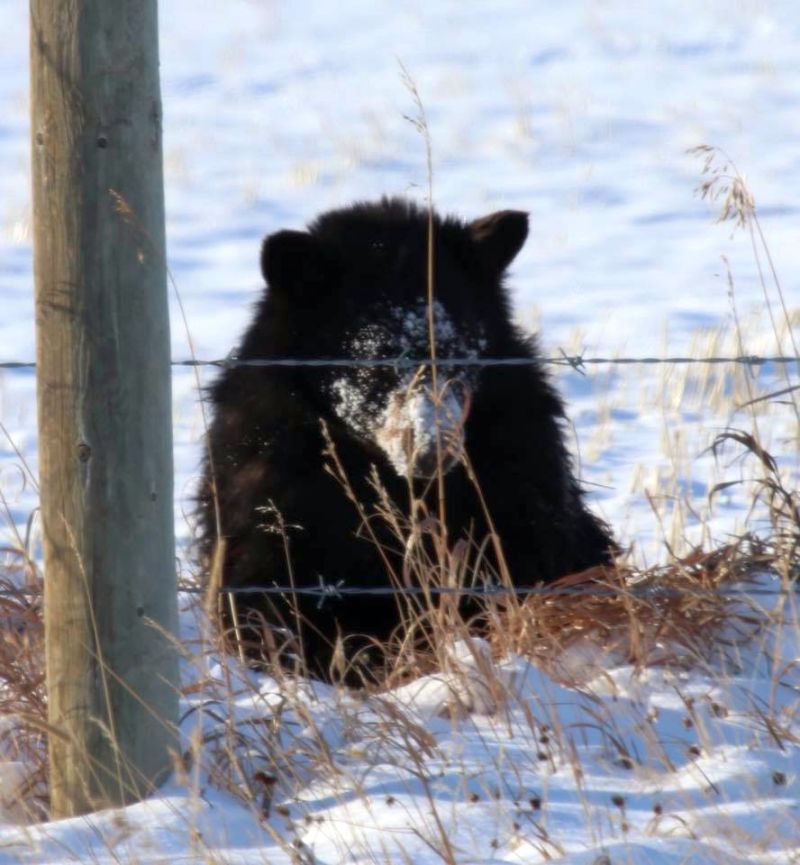Alberta Environment and Parks (AEP) has said they are looking at changing their policy on rehabilitating orphan bear cubs in Alberta. It’s the right decision but it isn’t the only reversal they need to make.

A few incidents in the last year have made it clear that something is awry with Alberta’s wildlife management policy. The first was when three bear cubs were found in a public washroom in Banff National Park.
Alberta centres weren’t permitted to take them in, so the animals had to be shipped to Ontario. Once they are old enough they’ll be shipped back to Alberta and released back into the park.
At the time, I wondered why they had this expertise in Ontario, but not here – where we happen to have a whole lot of bears.
The second incident happened in the fall when an injured black bear was spotted in a field in Springbank. Dubbed Russell by a group that set up RPAG (Russell’s Private Advocacy Group), the public rallied to try to convince the government to let conservation groups step in to assess the bear and treat him if necessary. Alberta Environment refused to budge.
LISTEN: A conservationist tells Danielle Smith how Alberta’s policy toward rehabilitating orphaned animals changed in 2010
There were also two other incidents: one involving a moose in Sherwood Park that was left to die without care or assessment, and another moose calf left to die after losing its mother outside of Okotoks.
All of these cases served an important purpose. They helped to educate the public on how wrongheaded Alberta’s conservation policy is.
The thinking behind the policy – at least in the case of bears – appears to be the worry that the cubs would become habituated to humans and end up becoming problem bears. The facts don’t bear this out.
Conservation biologist Lisa Dahlseide said Monday the research shows rehabilitated bears are no more likely to become problem bears than any other.
LISTEN: Lisa Dahlseide on the changes happening to Alberta’s conservation policy
Not everyone loves animals and plenty of people texted my show to say they didn’t want taxpayer dollars going to rescue wild animals.
But this is not a taxpayer-funded effort. That’s why it never really made much sense for the government to stand in the way of those who wanted to step in to use their expertise to help.
Private conservation groups have been operating in the province for decades, raising money privately to fund their efforts. That’s a measure of how many people do care about animals that these groups exist. They also do have the expertise to rehabilitate bears; they had been doing it up until a change in policy that happened in 2010.
As part of that policy change, rehabilitation centres were told they were no longer allowed to take in orphaned animals from a long list outlined in so-called “Schedule A,” including: mule deer, white-tailed deer, moose, pronghorn, skunk, fox, toads, salamanders, frogs (except leopard frogs), bats, deer mouse, raccoon, bighorn sheep, mountain goats, wolf, coyote, black bear, grizzly bear, cougar as well as elk, lynx and bobcat – unless they had prior written permission.
WATCH BELOW: Black bear cubs found in Banff National Park restroom

Kind of makes you wonder what animals are left for them to take care of. Centre operators were told that if they came across these animals they either had to kill them or return them where they found them, presumably to just let them die.
This did not sit well with the public, for good reason. All the advocacy efforts of animal welfare groups over the years have sensitized us to treating other living creatures respectfully. If an animal can be rescued, rehabilitated and released, we should do that. If it can’t be, we should euthanize it humanely.
Allowing orphaned animals to starve to death or to simply shoot them – as Alberta Environment has admitted to doing in the case of at least 24 orphaned bear cubs in recent years – offends our sense of basic decency.
The thousands of letters objecting to the government’s policy had an effect. The government decided to stop defending the indefensible and agreed to develop new protocols for private rehabilitation centres to step in to take care of cubs in time for the 2018 spring bear hunt.
Other changes to the protocols are likely to follow. If there are good reasons to continue a ban on treating some species, then the government should be prepared to make a good case with evidence. If not, then they should just stay out of the way and let those who care passionately about rescuing animals do the job.
Danielle Smith can be reached at danielle@770chqr.com.






Comments